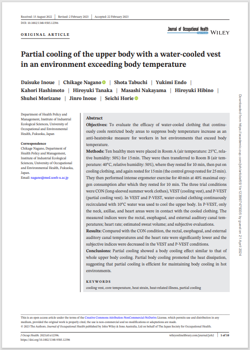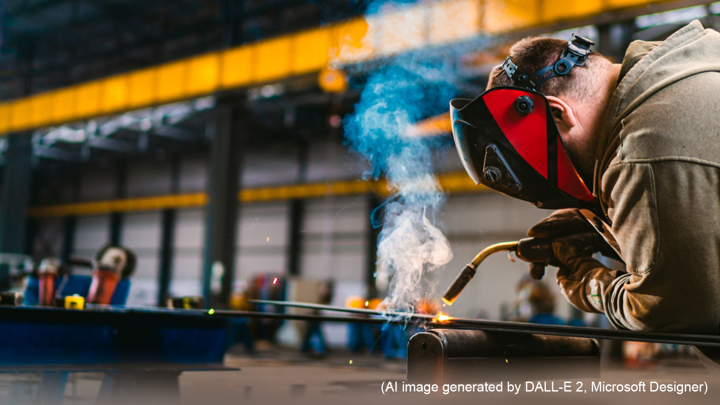#0154 Cooling Down the Heat: A Special Vest Can Keep Workers Cool in Scorching Temperatures

Cooling Down the Heat: A Special Vest Can Keep Workers Cool in Scorching Temperatures
Since the 2010 heat wave in Japan, preventing heat-related illnesses has become a significant concern in occupational health policy. Working in hot environments can result in workers disregarding safety procedures. Enhancing the working environment and changing work methods and schedules are often difficult, if not impossible. Therefore, development of equipment to assist workers in maintaining their body temperature is crucial.
Researchers conducted groundbreaking research on a vest equipped with a water-cooling system, targeting key areas of the body, such as the neck, chest, and underarms. They explored an innovative approach to cooling by focusing on both the cooling method and the specific areas of the body. By reducing the cooling area, it may be possible to develop heatstroke prevention products that consume less power and are lighter in weight.
The study involved ten healthy adult men who underwent testing in a room heated to 40°C, simulating a hot working environment. They wore the cooling vest, designed to target specific areas, such as the neck, heart, and underarm areas—places where large blood vessels are close to the skin surface—facilitating efficient cooling. The procedure lasted for 90 min: 40 min of preparatory rest, 40 min of physical exercise in a hot environment that exceeded body temperature, and 10 min of recovery rest.
The study tested three different conditions: the use of long-sleeved summer work clothes, a full cooling vest, and a partial cooling vest. The cooling vests used circulating water at 10°C to cool the upper body. Various parameters including each subject’s physical strength, body temperature, heart rate, exercise intensity, subjective thermal sensation, and estimated sweat volume were measured.
The findings indicated that wearing the vest significantly reduced core body temperatures, heart rates, and subjective feelings of heat compared to not wearing the vest. Additionally, cooling a limited body surface area proved effective in preventing an increase in body temperature during physical activity in a hot environment. The cooling system maintained a steady and cool water temperature, while the cooling clothes effectively cooled the body.
The implications of this research are vast. This proactive, wearable technology can offer real-time cooling, even in extreme conditions, and significantly reduce the risk of heat-related illnesses for workers in various industries. Additionally, it holds the potential to benefit vulnerable populations such as the elderly or individuals with medical conditions that render them more susceptible to heat.

Link to the original journal article:
https://academic.oup.com/joh/article/65/1/e12396/7479335
Title of the paper:
Partial cooling of the upper body with a water-cooled vest in an environment exceeding body temperature
Authors:
Daisuke Inoue, Chikage Nagano ,Shota Tabuchi, Yukimi Endo, Kahori Hashimoto ,Hiroyuki Tanaka , Masashi Nakayama , Hiroyuki Hibino , Shuhei Morizane , Jinro Inoue , Seichi Horie




